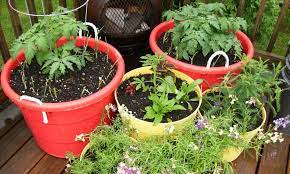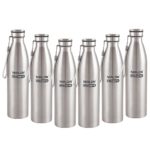Making your plant healthy is the key to having an incredible garden. However, there are some factors that you need to consider. One of them is the information about the worms that you will put in your pots. And gardenandgrass.com will help you to know more about our garden friend, worm.
Worms are the natural source of fertilizer. It makes our soil get healthy to make our plants productive. Casting is the term for worm poop. Yes, this dirt is a natural fertilizer that most people use for their gardens. Some studies advise that this organic fertilizer is the best option for beginners. But, as you know, some people are starting their gardening journey without understanding the process.
For that reason, they can start with the casting to observe and understands the first step in planting. However, to know more about the other essential information, join and explore this article. Let us find out more about the things you need to know before putting worms in your pot.
Essential Guideline Before Putting Worms in Pots
This section concerns the things that you need to consider before you use worms in your garden. Each of this information can help you to manage your steps to achieve your goal. It consists of the following;
- Know your worms
Identifying the types of worms is essential to make an excellent move while planting your seeds or seedlings. Each of the classes has different offers that might affect your plant big time. So, here is the following kinds that you must familiarize yourself;
- Pot worms or Enchytraeids
This type of worm has small in size and is white. Therefore, you can consider it as siblings of earthworms. However, some people have mistaken this type as baby red wigglers.
If you happen to spot a tiny worm in your pot, it might be the pot worm. As you know, worms invade plots with massive counts. They also have small and whitish bodies features that might creep you somehow. Pot worm loves to stay in an acidic environment. They also spring up once you add your acidic compound to your soil.
Benefit:
- It provides a perfect space to make the root breathe.
- It also helps to decompose the other element in your pot.
- It also helps in composting process.
- Red Wiggler or Eisenia Foetida
This worm can help you turn your kitchen and garden waste into organic fertilizer. Red wigglers are usually spotted in pots and other plant beddings.
The Red wiggler can function as a small composting unit in any worm bin. Like other earthworms, they love to dig and find a wet and warm spot in your pot.
Moreover, two to three inches is their body length. They possess a reddish-purpose color and faded yellowish on their tail. Similar to your regular earthworm in your pots outside, they also have their body structure.
Furthermore, when it comes to their nature. Red wiggler is a vegetarian earthworm. In that case, they only eat leaves, veggie scraps, and garden waste. Also, they convert organic elements into humus that helps the plant be healthy and productive.
Other Benefits:
- It introduces more oxygen into the soil.
- It improves soil retention capacity and prevents soil compaction.
- Millipedes
Another kind of vegetarian worm has a long, hard body in a rounded and cylindrical body shape. Besides, Millipeds are also known as black bugs with hundreds of eggs crawling under your pot or plant leaves. So you can also consider them as a harmless pest for your plants.
Furthermore, they are easy to identify. As you can see, Millipedes propose a characteristic of a segmented body with a couple of legs on the underside of its segments. They also love to stay in a wet and warm environment.
Benefits:
- They don’t feed on the plants as long as it is in good condition.
- They can’t bite or sting.
- Control the numbers of your worms
There are cases that some people might think that the more the worm is, the healthier the plant can be. This idea is a huge mistake. You must control their numbers to manage enough nutrients for your plants. If they make a massive production, they might negatively affect your plants.
The best thing you can do is to put a couple of worms and ensure that they don’t overlap in your pot for the time being. You can also check on them when you are organizing and trimming your plant. Then, apply to dig to make the roots of your plant breathe. And that is the time to check if your worms are much. If that happens, removing them is a great option.
- Change your plot when your plant is much more significant.
Transferring your plant into a much bigger pot is an excellent choice. That way, you can provide them with more nutrients from the soil you will put during the transfer. Also, you can help the worms to make a space under to allow the roots to breathe.
Conclusion
The information above is excellent data that you can use to understand why people use worms for their plants. However, you also need to know the proper way to ensure that worms are better than using chemicals for your plants. It might be creepy for some people. Thus it is an organic and natural way to make your plants healthy and productive.
We hope that these guidelines are helpful for your gardening journey. We appreciate you for reading this article. Thank you and Good luck.













